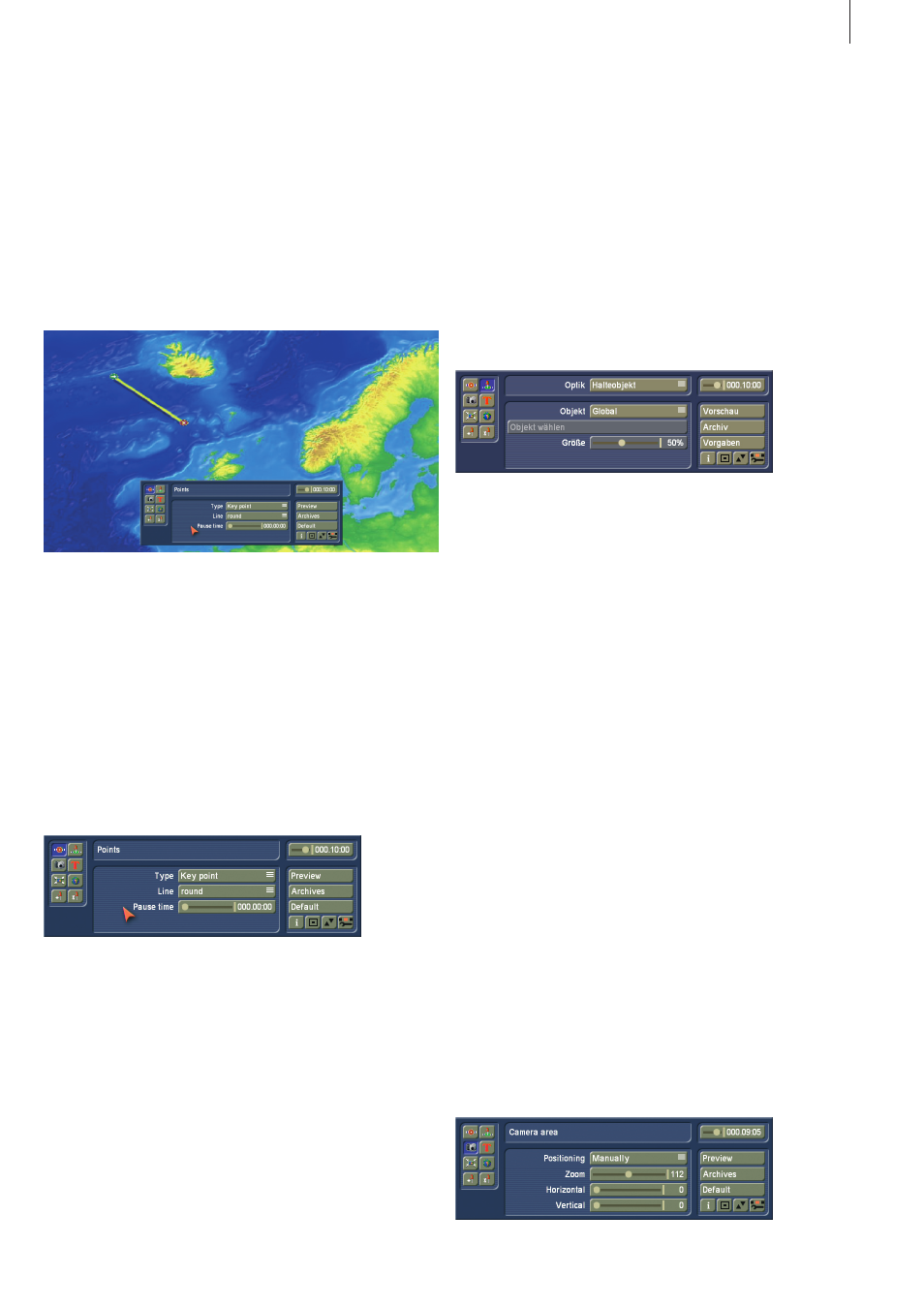3 . the menus, 3 .1 points menu, 3 .2 look menu – MacroSystem Columbus 3 User Manual
Page 9: 3 .3 camera detail menu

9
Columbus 3 manual
3 . The menus
When seen for the first time, the Columbus 3 user interface
may seem quite complicated. To help you find your way
around the extensive menus, the controls are explained here.
At the left of the Columbus 3 menus, you will see several
buttons on the highest level (depending on the mode selected).
They display different symbols that represent the main menus
described below.
At the left, you can see the functions
Point, Look, Camera de-
tail, Text, Editor detail, Global settings, Select new object
and the corresponding
Settings menu. When you click on one
of these buttons, the name of the menu thus activated will be
displayed in the header of the box in the middle. This way, you
will always know exactly in which menu you currently are.
The top four buttons serve to open menus relating to the active
(green) point. You must therefore first ascertain that the point
desired is green.
3 .1 Points menu
The
Type option allows you to switch between waypoint
and
key point. A waypoint merely influences the path of the
line, but is itself not visible in the final video. Hence, it is not
possible to set a pause time. A key point, on the other hand, is
usually linked to a visible object (such as a little flag) and has
additional options to adjust its pause time and its look.
The
Line button can be used to influence the path of the line in
the area around the point.
Round is typically selected in order
to obtain a smooth curve.
Angular results in a straight line
towards the point, a clear angle, and a straight line leaving the
point towards the next point. (The object moves towards the
point in a straight line and then continues on to the next point
also along a straight line.)
Pause time allows you to set a time during which the progres-
sion of the line is paused at this particular key point. This func-
tion can be used when you want to record a longer comment
in this location, or if you want to switch from the route display
to another video scene using a transition effect or if you want
to change the head object at this location.
At a key point with a pause time greater than 0, a new scene
can automatically be inserted during the calculation phase (this
is a setting in the effect options). The break will occur halfway
the pause time.
3 .2 Look menu
The look of the key point as defined in the general settings can
also be changed here. You can define the key point and chan-
ge the head object and the line setting. You can also configure
the transition effects of the key point and the head object. Use
Look to switch between the Position and View settings of key
points and head objects.
The settings enable you to switch between
Local and Global.
The Object setting also allows you to select
Off. In that case,
no object will be displayed at this key point, regardless of the
global settings. Normally all buttons are set to
Global. This
means that the global settings are applied to the key point.
This way, all key points look the same and can be easily modi-
fied globally. Only in rare cases is it necessary to set one of the
three components to
Local, when you want to make changes
to a specific point, independently of the other functions.
You can select an object with
Select object and change the
Size. The available options for the global changes can also be
found in the
Global settings menu (Chapter 3.6) under Key
object, Key object position, Key object view and Key object
transition and are explained there. In this Look menu, the
option
Head object movement will also allow you to change
the speed of a head object at the active key point.
If you activate the setting for acceleration, the head object will
start slower in this location, or will slow down before this key
point, if this action (slow down) has been activated. The setting
(percentage) is always applied to half of the stretch before
(slowing down) or after (speeding up) the key point.
3 .3 Camera detail menu